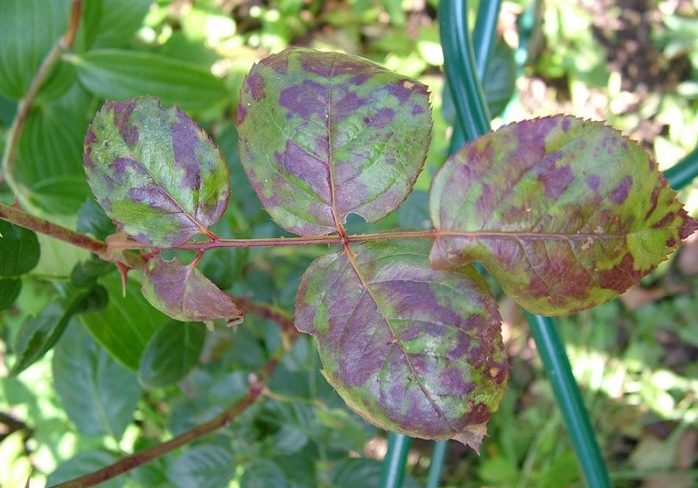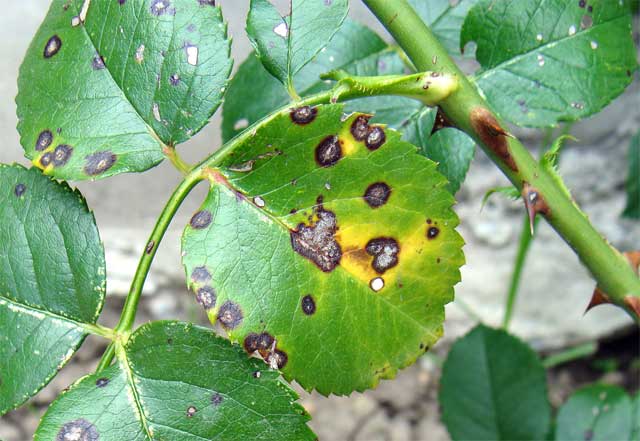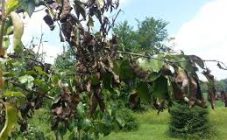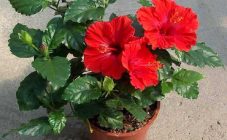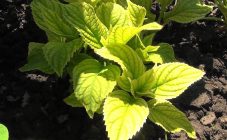The causes of blackening of roses, as a rule, are viruses and fungi, and there are about a dozen of them. The point is usually excessively high or too low humidity, insufficient light, damage. Sometimes the culprit is too dense vegetation in the rose garden. From the publication, the reader will learn why the leaves of the rose turn black and what to do, what measures to take.
Why do leaves and stems turn black
Not many new to gardening know why a rose has brown leaves. The most common disease is bacterial cancer or bacterial burn caused by the bacillus Pseudomonas syringae. Stems and leaves are covered with brown, depressed, rounded spots. The tissues at the lesion sites gradually die off, black-brown deep ulcers appear: the leaves fall off, and the stems dry out.
Ways to fight:
- Having identified such flowers, they should be burned, since bacteria remain in the stems and leaves.
- If the bush is not completely affected, you can save the flower by disinfecting the stems and leaves with a 5% solution of copper sulfate. The affected areas should be lubricated with garden varnish.
In the spring, as part of preventive measures and to prepare the bushes for winter, the rose garden must be treated with a Bordeaux mixture.
The tips of the leaves turn black
In a rose, the tips of the leaves turn black, the reason, as a rule, is the same, since the disease eventually spreads to the leaves. It manifests itself in the form of round, wet, almost black spots. Affected parts of the leaf plate dry out during drought, crack and fall out, resulting in dark bordered holes. If the humidity is exceeded, the specks will merge into one and the leaves, completely darkened, fall off. The processing is the same as for the stems.
Ways to fight:
- Sick bushes are shown such substances as mancozeb (it is in the preparations Ridomil, Profit and Gold) and triazole (available in Skor and Topaz). The drugs are used alternately at weekly intervals. Up to 3 sprays are carried out per season.
- Diseased leaves must be burned on time, without waiting for them to completely fall off.
- Before winter, the land under the bushes is treated with agents containing copper.
And for preventive purposes, treat roses with ash.
Blackening of buds
After spots have appeared on the stem, the disease spreads to the foliage and further affects the flowers. Rosebuds most often turn black due to powdery mildew - a fungal infection that first affects the stems and leaves, and then reaches the flowers. They are deformed and do not always bloom, begin to darken, and soon begin to fall off.
Ways to fight:
- Top dressing must be dosed. An excess of nitrogen in the soil, especially during bud formation, but a lack of calcium are the reasons for the appearance of powdery mildew.
- The rose garden should have moderate humidity.
- Before planting, it is recommended to dip the seedlings in a solution of Fundazole or copper sulfate (1%). A solution of 40 g of soap and 40-50 g of soda ash, diluted with 10 liters of water, is also suitable.
- 2-3 times a season, the bushes are sprinkled with ash, which is embedded in the ground.
Brown leaves on roses, that this is the appearance of black and brown spots, as well as, as a consequence, the "nibbled" appearance of the petals on the buds, indicate an attack on thrips flowers. Plants need to be treated.
Getting rid of thrips is not an easy process. This means that prevention is more effective.It is necessary to dig up the ground and remove the foliage in time - this is where thrips live.
And if there are already damaged blackened flowers in the rose garden, they need to be helped before they begin to shed the foliage: they should be cut off, and the bush should be treated with Istra or Intavir.
The constant change in temperature and high humidity are the causes of diseases of roses, as a result of which they can darken. But the use of improper agricultural techniques also leads to the appearance of black spots on parts of the flower. Therefore, before growing flowers, it makes sense to study the intricacies of caring for them and make the conditions as comfortable as possible for plants.
